شهدت حجابات الصلاة، وهي عنصر حيوي في الأزياء المحتشمة، ارتفاعًا كبيرًا في الطلب على مستوى العالم. تتعمق هذه المقالة في ديناميكيات السوق والتركيبة السكانية الرئيسية والاتجاهات الناشئة التي تشكل صناعة حجابات الصلاة.
جدول المحتويات:
نظرة عامة حول السوق
استكشاف المواد والأقمشة
التصميم والوظائف
التأثير الثقافي والتراث
المواسم واتجاهات الألوان
خلاصة
نظرة عامة حول السوق
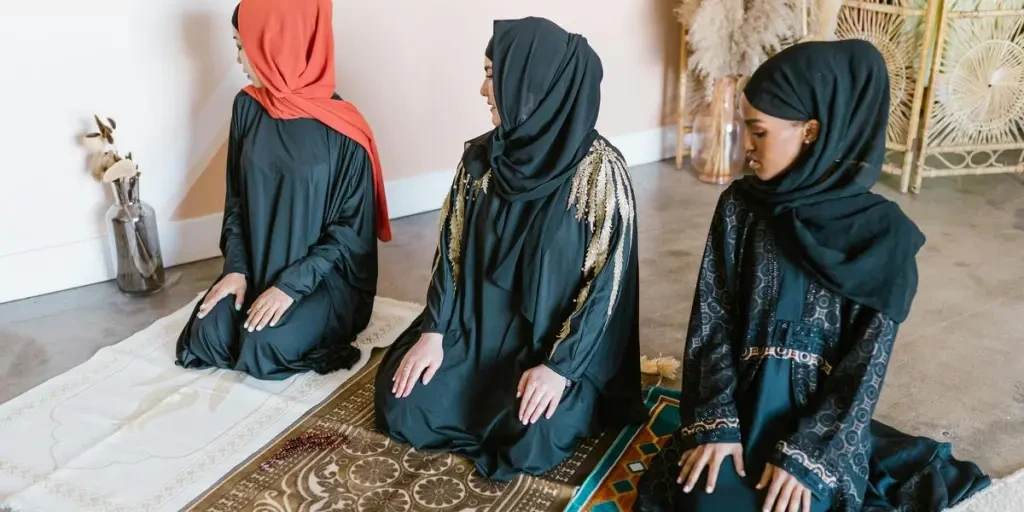
الطلب العالمي على حجابات الصلاة
لقد شهد الطلب العالمي على الحجاب أثناء الصلاة ارتفاعًا مطردًا، مدفوعًا بزيادة عدد السكان المسلمين وزيادة الوعي بالأزياء المحتشمة. ووفقًا لمركز بيو للأبحاث، من المتوقع أن يصل عدد السكان المسلمين في العالم إلى 2.2 مليار بحلول عام 2030، مما يعزز بشكل كبير الطلب على الملابس الدينية والثقافية المناسبة، بما في ذلك الحجاب أثناء الصلاة. لا يتوسع هذا النمو الديموغرافي في البلدان ذات الأغلبية المسلمة التقليدية فحسب، بل وأيضًا في الدول الغربية، حيث يتزايد عدد السكان المسلمين بسبب الهجرة وارتفاع معدلات المواليد.
ومن المتوقع أن ينمو سوق مستحضرات التجميل الحلال، الذي يشترك في قاعدة مستهلكين مماثلة لسوق الحجاب، من 36.8 مليار دولار في عام 2023 إلى 42.15 مليار دولار في عام 2024، بمعدل نمو سنوي مركب يبلغ 14.5%، وفقًا لما أوردته شركة Research and Markets. ويعكس هذا النمو اتجاهًا أوسع نطاقًا لزيادة الطلب على المنتجات التي تتوافق مع المبادئ الإسلامية، بما في ذلك الحجاب.
الأسواق الرئيسية والتركيبة السكانية
وتشمل الأسواق الرئيسية لحجابات الصلاة المناطق التي تضم أعدادًا كبيرة من السكان المسلمين مثل الشرق الأوسط وشمال إفريقيا وجنوب شرق آسيا. وتعد دول مثل المملكة العربية السعودية وإندونيسيا وماليزيا والإمارات العربية المتحدة من أكبر المستهلكين لحجابات الصلاة نظرًا لسكانها المسلمين الضخمين والتركيز الثقافي على الاحتشام.
وفي المملكة العربية السعودية، شهدت سوق مستحضرات التجميل الحلال، التي توازي سوق الحجاب، نموًا ملحوظًا، مدفوعًا بأغلبية السكان المسلمين في البلاد. ولعبت قناة المبيعات عبر الإنترنت دورًا محوريًا في هذا النمو، حيث وفرت إمكانية الوصول والراحة للمستهلكين. ووفقًا لشركة Research and Markets، ساهم ازدهار التجارة الإلكترونية في المملكة العربية السعودية بشكل كبير في زيادة شعبية مستحضرات التجميل الحلال، وبالتالي الحجاب.
وفي جنوب شرق آسيا، تعد إندونيسيا وماليزيا من الأسواق البارزة بسبب تعدادها السكاني الكبير من المسلمين وزيادة الدخول المتاحة. وتتصدر منطقة آسيا والمحيط الهادئ السوق ككل، حيث تمثل أكبر حصة من مستحضرات التجميل الحلال، مما يشير إلى اتجاه مماثل لحجاب الصلاة. ويعزز التوافق الثقافي والديني، إلى جانب الوعي المتزايد بالمنتجات الحلال، الطلب في هذه المنطقة.
الاتجاهات الناشئة في سوق الحجاب الصلاة
هناك العديد من الاتجاهات الناشئة التي تشكل سوق الحجاب للصلاة. ومن بين الاتجاهات المهمة التفضيل المتزايد للمواد المستدامة والصديقة للبيئة. ومع تزايد وعي المستهلكين بالبيئة، هناك طلب متزايد على الحجاب للصلاة المصنوع من الأقمشة العضوية والمستدامة. ويتماشى هذا الاتجاه مع الحركة الأوسع نحو الاستدامة في صناعة الأزياء.
وهناك اتجاه آخر يتمثل في صعود التجارة الإلكترونية والمنصات الرقمية، التي جعلت الحجاب الإسلامي متاحًا بشكل أكبر لجمهور عالمي. وتوفر تجارة التجزئة عبر الإنترنت سوقًا ملائمة للمستهلكين، مما يسمح لهم باستكشاف مجموعة واسعة من المنتجات من علامات تجارية مختلفة. ويتجلى هذا التحول نحو التسوق عبر الإنترنت بشكل خاص في المناطق التي تتمتع بقدر محدود من الوصول إلى المتاجر الفعلية.
كما تكتسب التخصيصات والشخصية زخمًا في سوق الحجاب للصلاة. يبحث المستهلكون بشكل متزايد عن منتجات فريدة ومخصصة تعكس أنماطهم وتفضيلاتهم الفردية. وتستجيب العلامات التجارية لهذا الطلب من خلال تقديم خيارات قابلة للتخصيص، مثل التطريز المخصص والتصميمات المصممة حسب الطلب.
استكشاف المواد والأقمشة
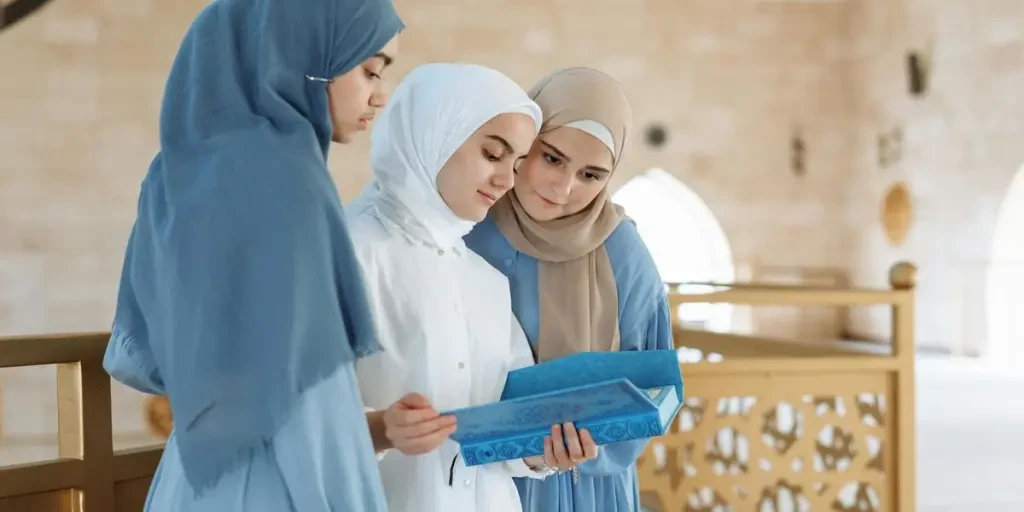
أشهر الأقمشة المستخدمة في حجابات الصلاة
يعد اختيار القماش أمرًا بالغ الأهمية في تصميم حجابات الصلاة ووظيفتها. تشمل الأقمشة الشائعة القطن والشيفون والجيرسي. يفضل القطن لنعومته وقدرته على التنفس، مما يجعله مثاليًا للارتداء اليومي. من ناحية أخرى، يتميز الشيفون بخفة وزنه ويوفر ثنيات رقيقة وأنيقة، ومناسبة للمناسبات الأكثر رسمية. يُعرف قماش الجيرسي بقدرته على التمدد والراحة، مما يجعله خيارًا عمليًا لمن يبحثون عن سهولة الحركة أثناء الصلاة.
دور الراحة والتهوية
الراحة والقدرة على التنفس من الأمور الأساسية عند اختيار الأقمشة المستخدمة في حجابات الصلاة. ونظرًا لارتداء هذه الملابس لفترات طويلة، وغالبًا في مناخات مختلفة، فيجب أن يسمح القماش بتدفق الهواء بشكل كافٍ لمنع ارتفاع درجة الحرارة. ويُعرف القطن والجيرسي بشكل خاص بقدرتهما على التنفس، في حين أن الشيفون، على الرغم من كونه خفيف الوزن، يمكن أن يحبس الحرارة في بعض الأحيان. لذلك، غالبًا ما يدمج المصممون ميزات التهوية أو يستخدمون مخاليط تعزز القدرة على التنفس دون المساومة على الجاذبية الجمالية.
خيارات مستدامة وصديقة للبيئة
تكتسب الاستدامة أهمية متزايدة في صناعة الأزياء، ولا تشكل حجابات الصلاة استثناءً. تكتسب الأقمشة الصديقة للبيئة مثل القطن العضوي والخيزران شعبية متزايدة. هذه المواد ليست مستدامة فحسب، بل توفر أيضًا راحة ممتازة وقابلية للتنفس. وفقًا لتقرير مهني، فإن الاتجاه نحو الموضة المستدامة مدفوع بطلب المستهلكين للمنتجات المسؤولة بيئيًا. كما يستكشف المصممون الأقمشة المعاد تدويرها والمواد المبتكرة التي تقلل من التأثير البيئي مع الحفاظ على جودة الحجاب ووظيفته.
التصميم والوظائف
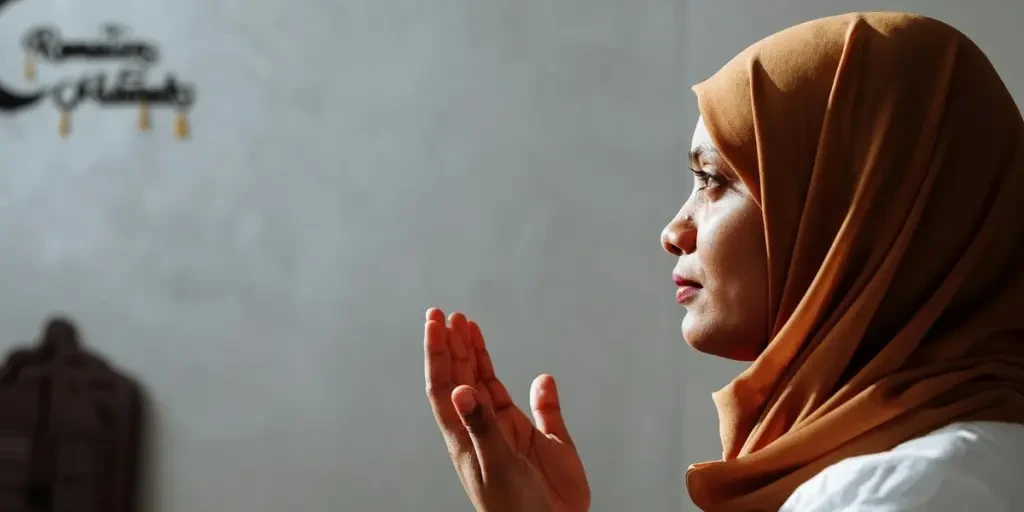
التصاميم التقليدية مقابل التصاميم الحديثة
لقد تطور تصميم حجابات الصلاة بشكل كبير، حيث حقق التوازن بين الجماليات التقليدية والوظائف الحديثة. غالبًا ما تتميز التصميمات التقليدية بخطوط بسيطة وتدفقية وزخارف بسيطة، مع التركيز على التواضع وسهولة الارتداء. ومع ذلك، تتضمن التصميمات الحديثة عناصر معاصرة مثل التطريز المعقد وحواف الدانتيل وحتى المطبوعات الرقمية. هذا المزيج من القديم والجديد يلبي احتياجات جمهور أوسع، مما يسمح بالتعبير الشخصي مع الالتزام بالمعايير الثقافية.
ميزات مبتكرة لتعزيز إمكانية الاستخدام
يتم دمج ميزات مبتكرة في حجابات الصلاة لتعزيز قابلية الاستخدام. على سبيل المثال، تتضمن بعض التصميمات الآن عصابات رأس مدمجة لإبقاء الحجاب في مكانه أثناء الحركة. يتميز البعض الآخر بإغلاق مغناطيسي أو أربطة قابلة للتعديل لملاءمة آمنة. هذه الإضافات العملية تجعل الحجاب أكثر سهولة في الاستخدام، وخاصة لأولئك الذين يرتدونها يوميًا. بالإضافة إلى ذلك، يتم دمج الأقمشة الماصة للرطوبة والحماية من الأشعة فوق البنفسجية لتلبية الظروف البيئية المختلفة، وضمان الراحة والحماية.
اتجاهات التخصيص والتخصيص
أصبحت التخصيصات والشخصنة من الاتجاهات المهمة في سوق الحجاب. يبحث المستهلكون بشكل متزايد عن قطع فريدة تعكس أسلوبهم الشخصي وتفضيلاتهم. وقد أدى هذا الطلب إلى ظهور خدمات مخصصة حيث يمكن للعملاء اختيار الأقمشة والألوان والزخارف. ووفقًا لرؤى الصناعة، فإن هذا الاتجاه يحظى بشعبية خاصة بين المستهلكين الأصغر سنًا الذين يقدرون الفردية والحصرية في اختياراتهم للأزياء.
التأثير الثقافي والتراث
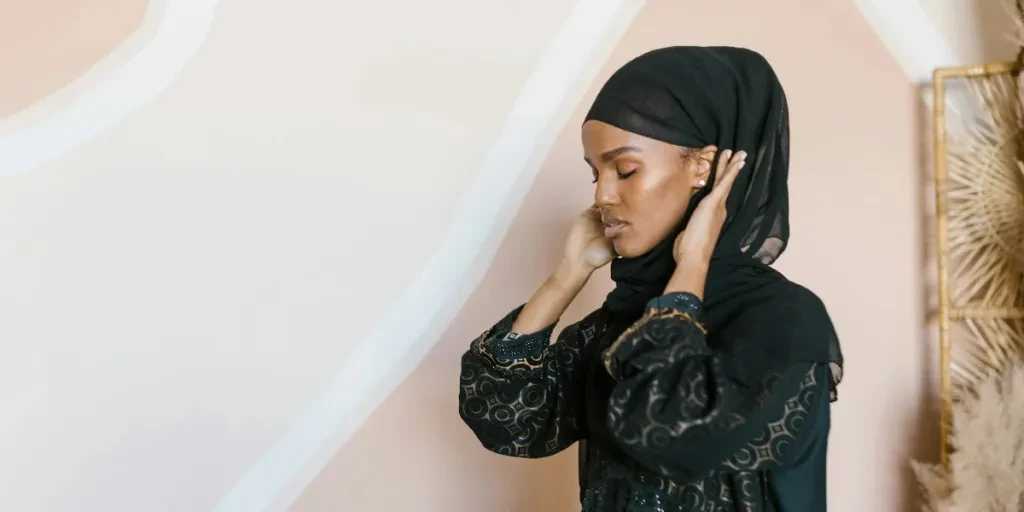
أهمية حجاب الصلاة في الثقافات المختلفة
تتمتع حجابات الصلاة بأهمية ثقافية ودينية كبيرة في مختلف المجتمعات الإسلامية. فهي ترمز إلى التواضع والتقوى والارتباط بالإيمان. وقد يختلف تصميم وأسلوب الحجاب على نطاق واسع اعتمادًا على التأثيرات الثقافية. على سبيل المثال، في جنوب شرق آسيا، غالبًا ما تتميز الحجابات بألوان نابضة بالحياة وأنماط معقدة، مما يعكس تراث المنسوجات الغني في المنطقة. وعلى النقيض من ذلك، قد تميل أنماط الشرق الأوسط إلى درجات ألوان أكثر هدوءًا وأقمشة فاخرة، مع التأكيد على الأناقة والرقي.
أنماط وأقمشة مستوحاة من التراث
تعود الأنماط والقوام المستوحاة من التراث إلى الظهور في تصميمات الحجاب للصلاة. يستلهم المصممون الإلهام من الزخارف والتقنيات التقليدية، مثل أقمشة الجاكار الزهرية والأنماط الهندسية، لإنشاء قطع تكرم التراث الثقافي مع مراعاة الأذواق الحديثة. لا يحافظ هذا النهج على الحرفية التقليدية فحسب، بل يضيف أيضًا جودة فريدة وخالدة للحجاب. يتجلى استخدام العناصر المستوحاة من التراث بشكل خاص في الحجاب للمناسبات الخاصة، والذي غالبًا ما يتميز بالتطريز والزخارف المتقنة.
تأثير الاحتفالات الثقافية على اتجاهات التصميم
تؤثر الاحتفالات الثقافية مثل شهر رمضان وعيد الفطر بشكل كبير على اتجاهات تصميم الحجاب أثناء الصلاة. خلال هذه الفترات، يزداد الطلب على الحجاب الأكثر زخرفة وفخامة المناسب للمناسبات الاحتفالية. يستجيب المصممون من خلال دمج عناصر مثل الخيوط المعدنية والترتر والخرز المعقد. وفقًا لتقرير احترافي، فإن الاتجاه نحو جماليات "PrettyFeminine" و "PrettyExtravaganza" بارز بشكل خاص خلال هذه الاحتفالات، حيث يبحث المستهلكون عن قطع تجمع بين التواضع التقليدي والجاذبية المعاصرة.
المواسم واتجاهات الألوان
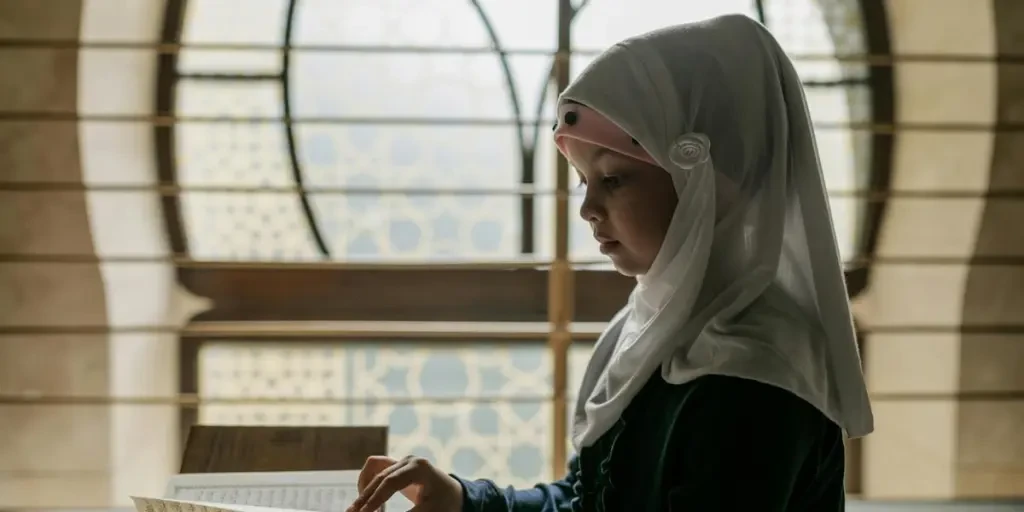
اختلافات الفصول في تفضيلات الحجاب في الصلاة
تلعب المواسم دورًا حاسمًا في تفضيلات الحجاب أثناء الصلاة. خلال الأشهر الأكثر دفئًا، يفضل الناس الأقمشة الخفيفة والقابلة للتنفس مثل القطن والشيفون. وعلى النقيض من ذلك، تشهد الأشهر الأكثر برودة تفضيلًا للمواد الأكثر سمكًا وعزلًا مثل مزيج الصوف والجيرسي. كما يكيف المصممون لوحة الألوان لتعكس التغيرات الموسمية، مع هيمنة الألوان الفاتحة والباستيل على مجموعات الربيع والصيف، وألوان أكثر عمقًا وثراءً في الخريف والشتاء.
الألوان والأنماط الرائجة لمختلف المواسم
تختلف اتجاهات الألوان للحجابات التي تُلبس أثناء الصلاة باختلاف المواسم. وغالبًا ما تتميز مجموعات الربيع والصيف بألوان الباستيل الناعمة والأنماط الزهرية، مما يثير شعورًا بالانتعاش والتجدد. وتشمل الألوان الشائعة البانا كوتا والسوربيت الوردي والأخضر الحكيمي. ومن ناحية أخرى، تميل مجموعات الخريف والشتاء إلى دمج درجات الألوان الداكنة الأكثر هدوءًا مثل الأسود والذهبي المشمس ودرجات الألوان العميقة. كما تتغير الأنماط باختلاف المواسم، حيث تكتسب التصميمات الهندسية والمستوحاة من التراث شعبية في الأشهر الأكثر برودة.
التكيف مع الظروف المناخية والطقس
إن تكييف حجابات الصلاة مع الظروف المناخية المختلفة أمر ضروري لضمان الراحة والعملية. ففي المناخات الحارة والرطبة، يفضل استخدام الأقمشة الخفيفة التي تمتص الرطوبة للحفاظ على برودة وجفاف من يرتديها. وعلى النقيض من ذلك، تتطلب المناخات الباردة استخدام مواد عازلة توفر الدفء دون المساس بالقدرة على التنفس. ويدمج المصممون بشكل متزايد ميزات خاصة بالمناخ مثل الحماية من الأشعة فوق البنفسجية ومقاومة الماء لتلبية الاحتياجات البيئية المتنوعة.
خلاصة
يعكس تطور حجابات الصلاة تفاعلًا ديناميكيًا بين التقليد والحداثة، والراحة والأناقة، والتراث الثقافي والاتجاهات المعاصرة. ومع نمو الطلب على الأزياء المستدامة والشخصية، يبتكر المصممون لتلبية هذه الاحتياجات مع تكريم الأهمية الثقافية لحجابات الصلاة. وبالنظر إلى المستقبل، فإن دمج المواد والتكنولوجيا المتقدمة، إلى جانب التقدير الأعمق للتنوع الثقافي، سيستمر في تشكيل مستقبل تصميم حجاب الصلاة، مما يوفر للمستهلكين مزيجًا من الوظائف والأناقة والتعبير الشخصي.





 Afrikaans
Afrikaans አማርኛ
አማርኛ العربية
العربية বাংলা
বাংলা Nederlands
Nederlands English
English Français
Français Deutsch
Deutsch हिन्दी
हिन्दी Bahasa Indonesia
Bahasa Indonesia Italiano
Italiano 日本語
日本語 한국어
한국어 Bahasa Melayu
Bahasa Melayu മലയാളം
മലയാളം پښتو
پښتو فارسی
فارسی Polski
Polski Português
Português Русский
Русский Español
Español Kiswahili
Kiswahili ไทย
ไทย Türkçe
Türkçe اردو
اردو Tiếng Việt
Tiếng Việt isiXhosa
isiXhosa Zulu
Zulu